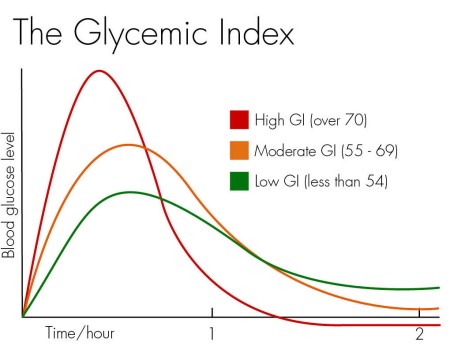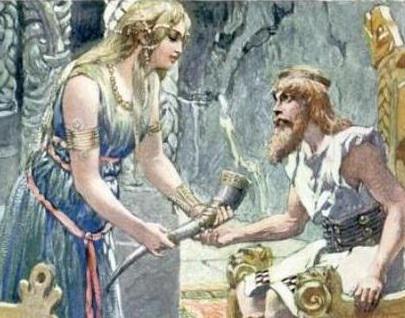This is an interesting video about mead and its significance. As the video points out it is unlikely that the importance of mead was its alcoholic content.
The video theorizes that mead contained hallucinogenic properties. I would like to suggest an alternative explanation for the importance of mead in the ancient world.
As I explain in this post mead made by our ancestors had very little alcohol. It did have a high glucose content and humans need glucose to function.
Today we live sedentary lives and have ready access to glucose in many forms so most of us are unfamiliar with what happens to us when we run out of glucose. Some athletes especially cyclists do experience this. It is called hitting the wall or ‘bonking’. The medical term for this is hypoglycemia which can occur when blood sugar is 70 milligrams per deciliter or lower. These are some of the symptoms: confusion, dizziness, feeling shaky, headaches, irritability, trembling, weakness, anxiety, poor concentration. Without treatment you could pass out or even go into a coma.
An individual on an average diet is able to store about 380 grams of glycogen, or 1500 kcal in the body. Intense cycling or running can easily consume 600–800 or more kcal per hour. Unless glycogen stores are replenished during exercise, glycogen stores will be depleted after less than 2 hours of continuous intense exercise.
It is possible to replenish glucose through fat metabolism during gentle aerobic exercise. Fighting in hand to hand combat for several hours was anything but gentle. It would have been what is called anaerobic exercise, where there is insufficient oxygen to sustain the muscles. Examples of anaerobic sports in the modern world are sprinting or weightlifting. Battles in the ancient world lasted much longer than 2 hours. The battle of Teutoburg Forest for instance lasted about 3 days. So how did the warriors avoid hypoglycemia?

The GI is a scale that ranks carbohydrates from 0 to 100 according to how quickly they are processed in the body.
Foods with a high glycemic index rating — above 70 — generally make the blood sugar quickly go up and then rapidly drop back down in a short period of time. If a food has a moderate score, between 55 and 69, it will still raise your blood sugar, but probably not as much as something with a higher ranking.
Honey typically has a GI of 58. This is therefore ideal for a Teutonic warrior, raising blood sugar quite high but also lasting more than an hour. Carbohydrates from liquids are usually digested rapidly,
In the 19th and early 20th century, athletes occasionally drank beer of low alcohol content replenishing water, minerals and energy in the body. Today sports drinks like Gatorade give athletes an energy boost, replace fluids and increase the glucose circulating in the blood. Could mead have played a similar role in the ancient world?
The only source of pure glycogen in Northern Europe would have been honey which would have therefore played a crucial role in military life. This may also be the reason that the bee was considered sacred.
The Maiden with the Mead

A recurring theme in the Poetic Edda, is the supernatural maiden offering a cup or a horn of precious mead to a hero. The motif of a maiden serving mead is also found in many images from the Viking Age, carved on rock – especially memorial stones at burial places – or woven on hangings.
Maria Kvilhaug, a Norwegian scholar of Norse mythology, has suggested that the maiden with the mead was part of an initiation ritual. This could be right but the actual origin may come from the battlefield.
Tacitus, the Roman historian, writes in Germania:
“Tradition says that armies already wavering and giving way have been rallied by women who, with earnest entreaties and bosoms laid bare, have vividly represented the horrors of captivity, which the Germans fear with such extreme dread on behalf of their women…And what most stimulates their courage is, that their squadrons or battalions, instead of being formed by chance or by a fortuitous gathering, are composed of families and clans. Close by them, too, are those dearest to them, so that they hear the shrieks of women, the cries of infants”
It is clear that women were present on the battlefield. Tacitus is not a wholly reliable source and the importance of the women may have been more than exhortation. Could they have given the warriors mead in the same way that athletes today are given drinks high in glucose? Is this the true origin of the maiden with the mead? They could have played a crucial role in determining the ability of warriors to continue fighting and thus influenced the outcome of the battle. In doing so a mythology would have been built around these mead bearing women.
